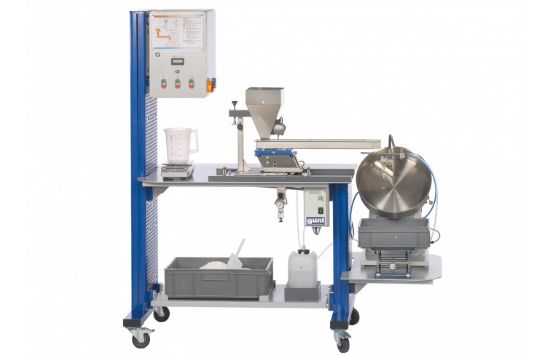The terms agglomeration, granulation and pelletisation designate the process of particle size enlargement of solids. This trainer was developed in cooperation with the Department of Mechanical Engineering and Process Engineering at the Niederrhein University of Applied Sciences in Krefeld.
A powder (fine material) is continuously fed onto an inclined, rotating dish granulator. A pump delivers granulating liquid to a two-component nozzle. The liquid is atomised over the powder by compressed air. Starting from a small number of moistened particles, a rolling motion produces growing numbers of balls (agglomerates). The fine material in the moved layer tends to remain close to the bottom. It is lifted higher than the forming agglomerates by the rotary motion of the dish. The ball-shaped agglomerates roll along the surface of the layer. When they have attained a certain size, they drop off the rim of the disc. The agglomerates are collected in a tank. Two further tanks are provided for the solid material (for which powdered limestone is recommended) and the granulating liquid (sugar powder diluted in water). The mass flow of solid feed material, the flow rate of the liquid, the speed and the angle of inclination of the disc are adjustable. The compressive strength of the resultant agglomerates can be measured using a laboratory device. To determine these and other key properties of the agglomerates, a drying chamber is also recommended.

